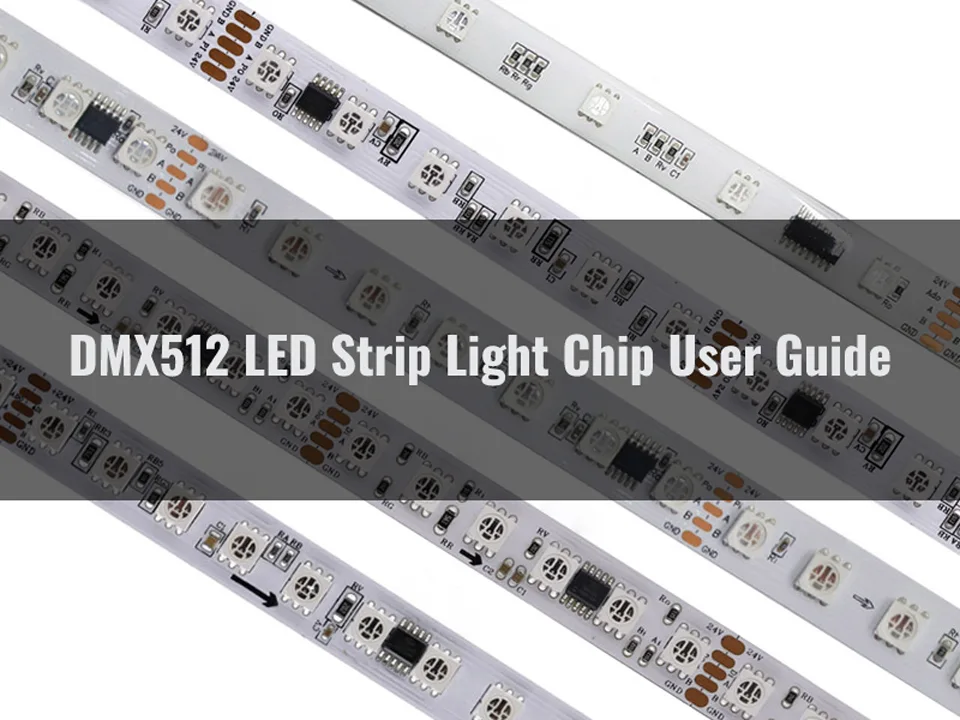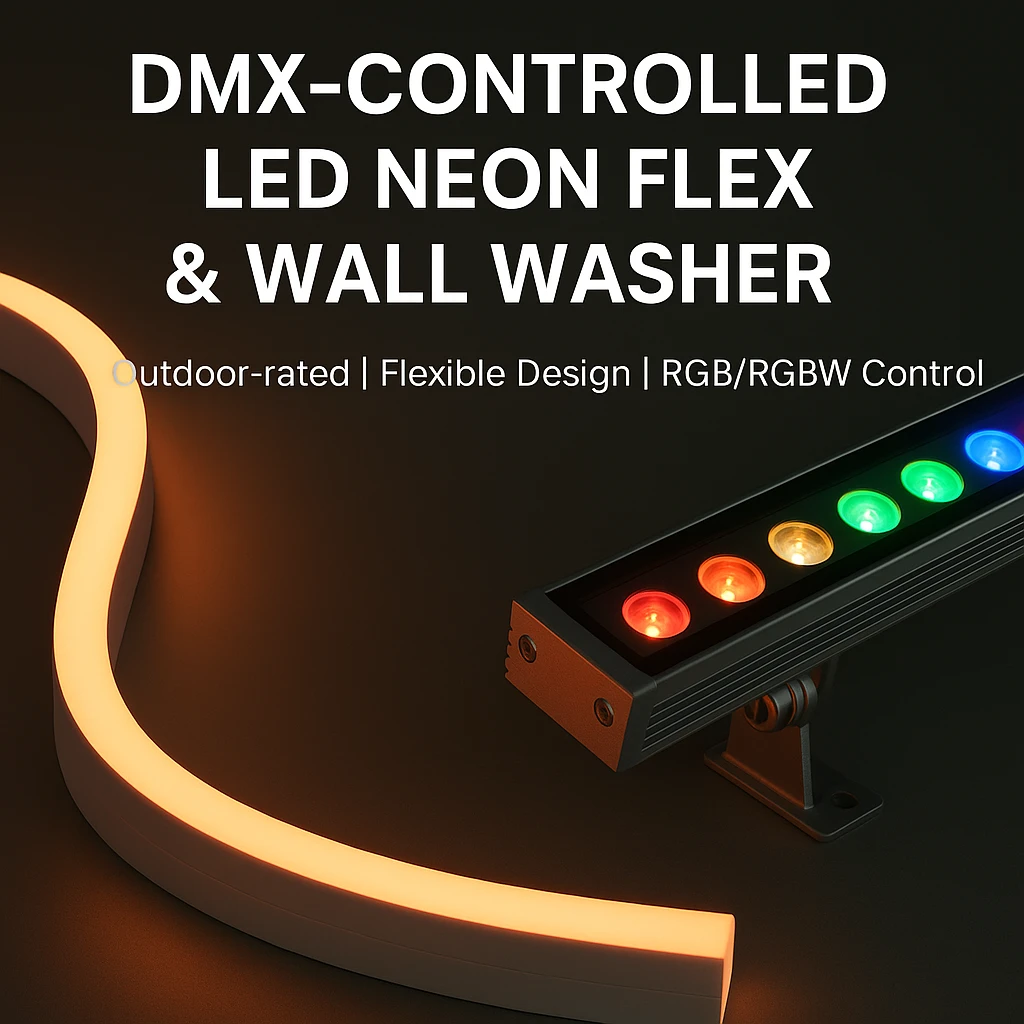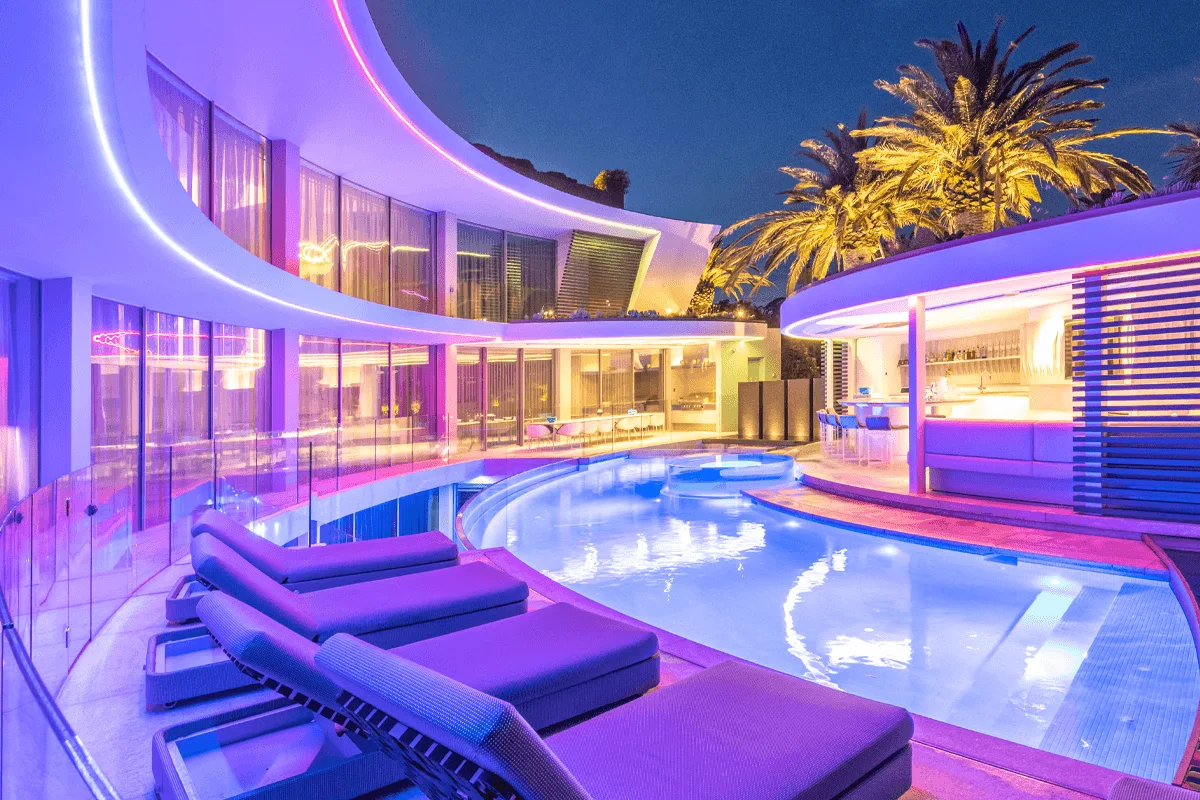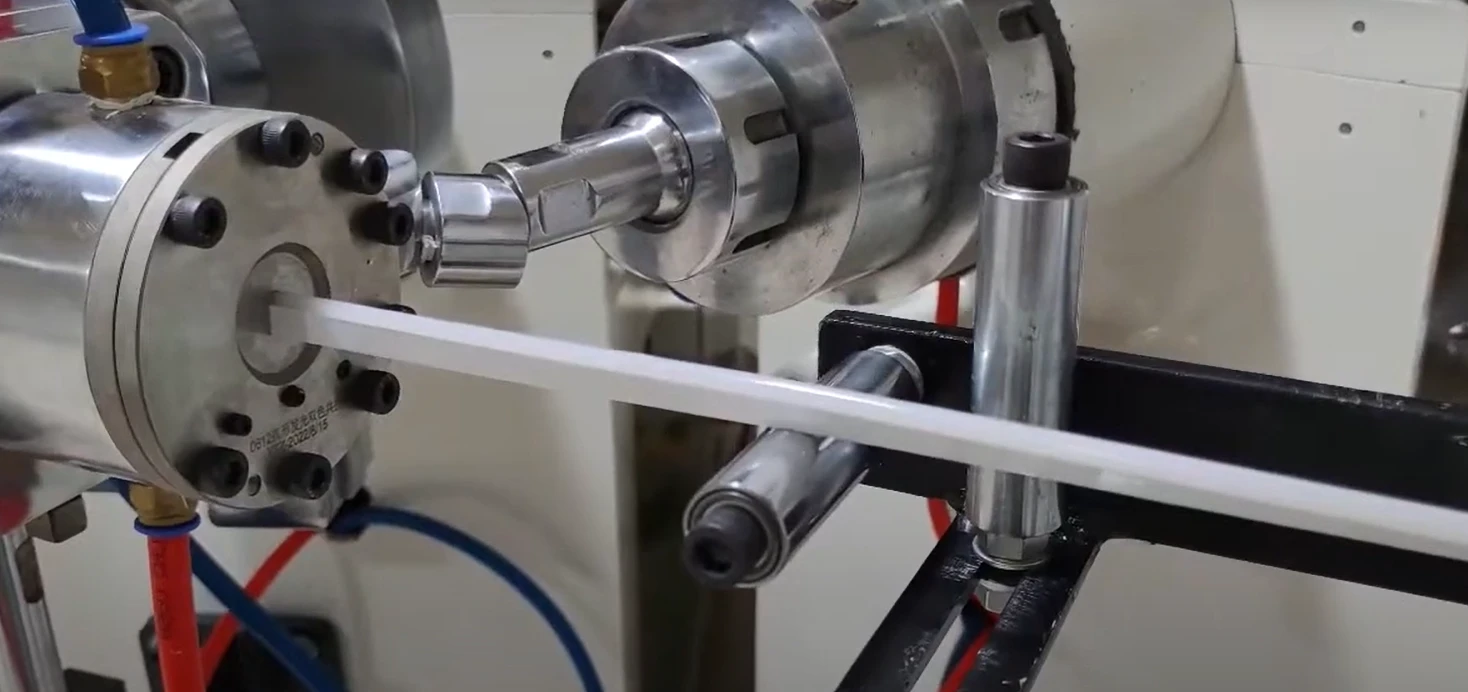LED lighting is one of the best ways to illuminate a space. LED lighting solutions use very little power and are extremely bright. LED strip lights and LED rope lights are both flexible solutions for creative lighting needs. While they may have a lot in common, they are not the same.
LED strips are flat and bright. Rope lights, by contrast, are tubular and less bright. In addition, they differ in beam angle, bend angle, cut length, energy efficiency, and application. However, in terms of price, rope lights are cheaper than LED strips.
For those seeking a flexible lighting solution and struggling to choose between LED strip lights and rope lights for their lighting project, I offer an in-depth comparison. I bring them an in-depth comparison between LED strips and rope lights to help them make that decision. So what are you waiting for? Read on to learn some of the differences between the two!
What are LED Strip Lights?
LED Strip Lights, also known as LED Tape or Strip Lights, consist of a flexible circuit board with surface-mounted light-emitting diodes (LEDs), usually with an adhesive backing. Additionally, the entire LED tape is marked with scissor icon cut marks that allow you to cut the tape to the desired size.LED tape is available in a variety of quality grades, so it’s important to understand the difference between high-quality and low-quality options.
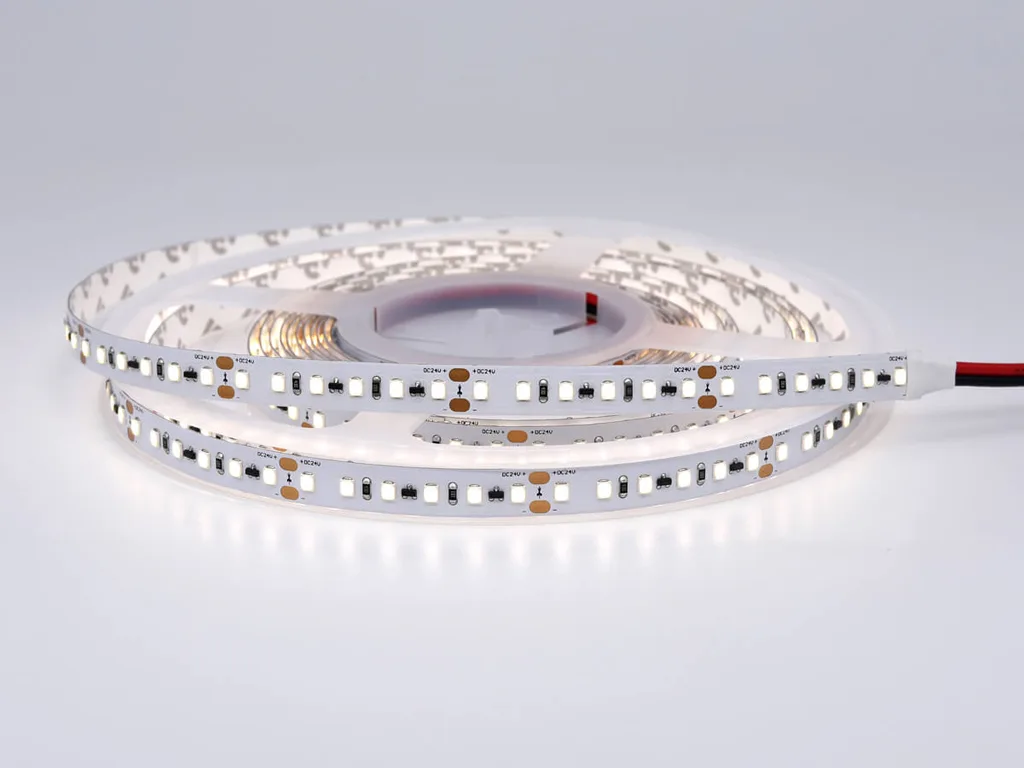
LED strips have a flat, low-profile shape that allows them to be easily installed in a variety of locations. Their brightness and customizable nature make them suitable for a variety of applications, including kitchen cabinet lighting, ceiling light replacement, hobby projects, or large conference rooms. They can be controlled via wireless dimming systems, DMX controllers, or wall switches.
Pros and Cons of LED Strip Lights
Pros
Brightness: LED strip lights provide a high level of brightness and can be dimmed to match the desired ambiance. This is the luminous efficiency or efficacy measured in lumens.The density or spacing of the LED chips is also a factor in the brightness level of the LED strip.
Size: Low-voltage LED strips are thin and easy to install in a variety of environments. They are often referred to as “tape lights” because of their resemblance to tape. The size of LED tape varies greatly from manufacturer to manufacturer, and the quality of the materials used will also affect the size of the tape. Ideally, the following are standard on the market: 8mm to 12mm widths and lengths of 5 or 10 meters.
Installation: The LED strips come with a convenient 3M double-sided adhesive backing for effortless installation. In addition to this, there are many options available to make installation and mounting simple and professional, such as using LED channel mounts.
Light Quality: LED strips typically offer better light quality than other lighting options, including higher color rendering index (CRI), light purity, color consistency, and accuracy.
Colors and Options: LED strips offer a variety of color change options, providing greater flexibility in creating dynamic lighting effects. They can be controlled using remote controls, wall switches, dimmer switches, or sophisticated DMX systems.
Simple Installation: While most LED strip kits are easy to use and suitable for DIY installation, some projects may require specialized assistance, such as hardwiring to a wall dimmer, calculating wattage usage, or in-wall wiring. However, even if larger projects require professional assistance, LED strip installation is still easier than traditional lighting installation.
Cons
Run Length: LED strips have a maximum run length before the voltage drops, depending on whether they are running at 12V or 24V DC input. While this is true, there are ways to mitigate and overcome this limitation.
- Running parallel connections is a good way to alleviate this problem!
- Splitting the load is another way to mitigate the length of the run; it may appear to be a continuous connection, but in reality the load is spread out and shared through multiple drivers in the run.
360 Degree View: Most strip lights have a narrow beam angle of 120 degrees, making it more challenging to achieve a 360 degree lighting installation. Indeed, there are alternatives if a 360-degree lighting angle needs to be achieved. COB strips, for example, can achieve a 180-degree beam angle, so lining up two COBs in a row is a better option depending on your target application. When it comes to larger projects, custom requests are another option to consider when off-the-shelf lighting fixtures or options are not available.
Horizontal Bend Angle: LED light strips cannot be bent significantly, and there is a limit to how far they can be bent horizontally. However, strip connectors can solve this problem.
What are LED Rope Lights?
Rope lights are tubular, clear fixtures with miniature LEDs or incandescent bulbs mounted inside. These tubes are made of epoxy, plastic, or similar clear materials. Due to the relatively low light output of rope lights, you cannot use them for general lighting. Instead, these fixtures are perfect for decorative purposes. You can use them for soft accent lighting and other holiday decorations. In addition, they are relatively inexpensive and available in a wide range of colors.
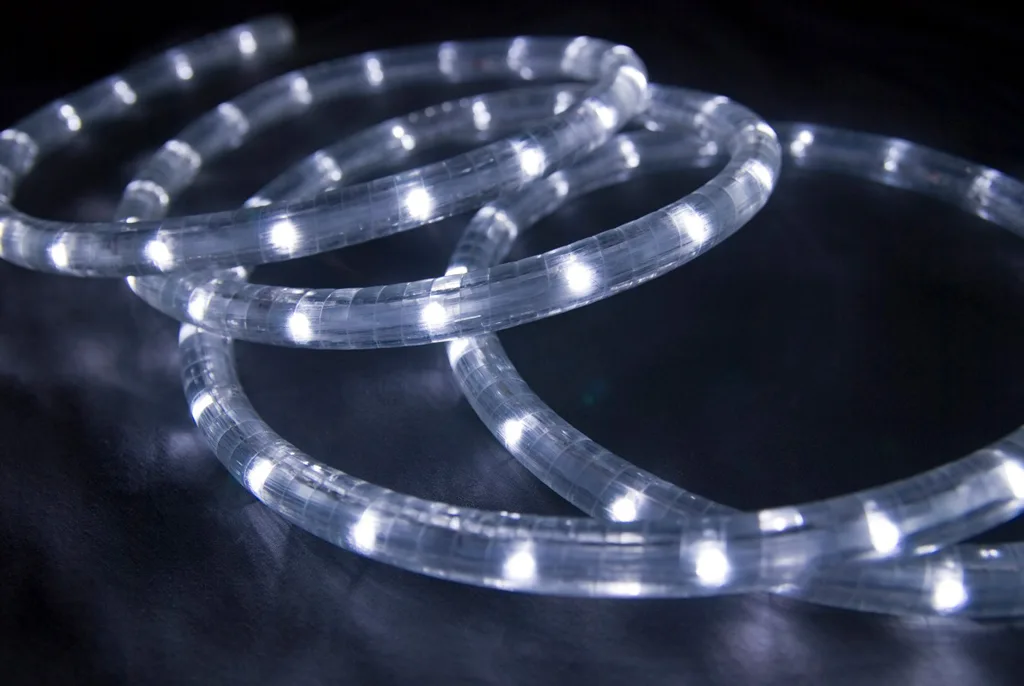
Pros and Cons of LED Rope Lights
Pros
Cost: Rope lights are relatively inexpensive and can save money in the short term if they are of high quality.
Run Length: They can be extended up to 250 feet with an AC input or about 50 feet with a DC input before needing an additional power input.
360 Degree View: Rope lights can be molded into various shapes and are commonly used for Christmas decorations or other decorations.
Cons
Low Brightness: Rope lights are not bright enough for many applications where LED strips excel, such as under-cabinet lighting, task lighting, and projects that require focused lighting.
Yellowing of Lamps: The lamps in rope lights tend to dry out and crack in the sun, resulting in a yellow or brownish appearance. This affects light output and the color emitted.
Size: Rope lights are relatively thick and may be difficult to install in certain areas.
Installation: Unlike LED strip lights, rope lights require larger mounting clips and do not have an adhesive backing, making installation less convenient.
Low Bend Angle: Excessive bending may cause the rope light to glow due to its internal wiring.
What is the Difference Between LED Strip Lights and LED Rope Lights?
On the surface, you would simply think that LED strip lights and rope lights are almost the same thing. However, while rope lights and LED strip lights have a lot in common, by definition they differ in the following ways.
LED Strip Lights vs Rope Lights Quick Distinction Chart: 13 Differences
| Feature | LED Strip Lights | LED Rope Lights |
| Structure | Flat circuit board | Cylindrical PVC tube |
| Light Source | SMD LED chips | LED bulbs |
| Dimensions | Slim, 8-12mm wide | Thicker, 10~13mm diameter |
| Running Length | Up to 164ft | Up to 250ft |
| Flexibility | Flexible, but not for tight curves | Rigid but durable |
| Customizable | Highly (color, brightness) | Limited (some colors) |
| Brightness | Adjustable (300-1200+ lumens) | Moderate (50-200 lumens) |
| Energy Efficiency | High | Moderate |
| Installation | Adhesive backing, clips | Clips, ties |
| Beam Angle | Narrower, 120°-180° | Wide, 360° |
| IP Rating | IP20-IP68 | IP44-IP68 |
| Applications | Indoor, accents, under-cabinet | Outdoor, festive decor |
| Cost Effectiveness | Moderate to high | Generally affordable |

Structure and Appearance
LED strips are flat fixtures made of LED chips and printed circuit boards. Here you will find LED chips arranged at different intervals. For high-density LED strips, the chips are arranged close together. For low-density LED strips, the chips are arranged farther apart. As a result, low-density strips create hot spots when turned on. Therefore, you should not use them in applications where appearance is critical.
The outer silicon or epoxy layer is another critical element of LED strips. This prevents the LEDs from coming into direct contact with moisture, thus making the fixture waterproof. You can also get many color variations in these strips, such as monochrome LED strips, dimmable white LED strips, RGB LED strips, and addressable LED strips.
LED rope lights have a transparent tubular structure. Here you can see the LEDs or incandescent bulbs arranged along the tubes. These tubes are made of frosted PVC or epoxy resin. These materials allow you to quickly bend and shape them to suit your needs. Nevertheless, they are available in different single colors. Unlike LED strips, there will be no multi-colored RGB in rope lights.
Light Source
In an LED strip, small LED chips are the light source. They come in different shapes and sizes. The most interesting fact is that you can get an idea of the size of these chips by looking at the numbers SMD2835, SMD3528, and SMD5050. These numbers indicate the length and width of the LED. For example, SMD2835 LED strip means that the LED chip has a width of 2.8 mm and a length of 3.5 mm. The shape of the LED and its brightness vary depending on these SMD sizes. The larger the chip, the brighter the light.
Rope lights are powered by either LEDs or incandescent bulbs. But can you guess which light source is best for rope lights? Without a doubt, LED rope lights are the best because they are very energy efficient. Incandescent rope lights use too much energy and generate heat. This makes them less popular than LED rope lights.
Dimensions
LED strips come in different PCB widths: 6mm, 8mm, 10mm, 12mm, 25mm, 28mm, 40mm, etc. Depending on the length, these strips are usually supplied in a variety of PCB widths. Depending on the length, these strips are usually supplied on 5-meter reels. However, there are more sizes available. For example, you can find LED strips up to 60 meters long, depending on the voltage rating. Common lengths of LED strips are listed below:
| Voltage | Length Of LED Strips Per Reel |
| 12V/24VDC | 5-meter/reel |
| 24VDC Constant Current | 20-meter/reel |
| 36VDC Constant Current | 30-meter/reel |
| 48VAC/110VAC/120VAC/230VAC/240VAC | 50-meter/reel |
| 48VDC Constant Current | 60-meter/reel |
Rope lights come in different diameters. The most common are 10 mm and 13 mm. If you want better flexibility, choose 10 mm rope lights. They are more flexible than 13-mm rope lights. You can make signs and use them to illuminate curved areas.
Running Length
Don’t confuse LED strip length with running length; they are different concepts. Length refers to the physical length of the strip. Running length, however, refers to how long an LED strip can run without any voltage drop using a single power source. The higher the voltage, the longer the run length. However, the run length also depends on other factors such as LED density, type of LED strip, input current, and so on. Below, I will add the run lengths of LED strips with different voltage ratings:
| Voltage | Max Run Length |
| 12V DC | 5 meters |
| 24V DC | 10 meters |
| 24V Constant Current (CC) | 20 meters |
| 24V RGB & RGBW | 7 meters |
| 24V RGBCC & RGBWCC | 20 meters |
| 120V | 50 meters |
The length of a rope light’s run depends on the power source. You will find both AC and DC options for rope lights. DC rope lights usually have a longer run length than AC rope lights. The table below will explain this:
| Voltage Input | Max Run Length |
| AC | 76.2 meters |
| DC | 15.24 meters |
Flexibility
The LED strip is mounted on malleable circuit board tape that can be bent to a 90-degree angle and tapered to fit any surface. This makes them more flexible and perfect for sharp edges. You can bend these ultra-flexible LED strips to multiple angles and fold them up. Popular corner folding methods for LED strips include 90-degree or angle folds, 90-degree tilt or ribbon bends, accordion folds, etc. All of these folding measures make LED strips ideal for creative lighting that requires extended flexibility.
Rope lights are flexible, but not as flexible as LED strips. You can’t make a 90-degree angle when installing these tubular rope lights in a corner. They always end up with a 3-4 inch (or greater) bend radius. As a result, rope lights don’t provide a perfect light profile through edges or corners. However, you can use them for simple curves or straight lines.
Customizable
LED strips give you extended customization capabilities; want to know how? These strips come on a standard 5-meter reel, but you can easily cut them to the size you need. The LED strips are cut in very short lengths, which helps you to accurately determine the size.
The cut marks appear after every third LED. However, this may vary depending on the density of the LED strip. The most common cut lengths are 25 mm, 50 mm, or 100 mm; this may vary by brand. Additionally, some manufacturers, such as SignliteLED, offer customization of cut lengths.
Rope lights can also be cut, but the size flexibility may be better than with LED strips. The main trouble you face when sizing is that they come in longer cut lengths. The cut points are far apart, usually every 18-24 inches (457.2 mm-609.6 mm). Therefore, you can’t cut them to the exact size.
Brightness
These strips come in different brightness levels. For example, you can use high-lumen LED strips for general and task lighting. For decorative and accent lighting, choose low-lumen LED strips. These different brightness levels make them suitable for multipurpose applications.
However, the brightness depends on the size of the LED chip, LED density, wattage, and more. For example, SMD5050 LED strips emit 3 times more light than SMD3528 LED strips.
LED rope lights are usually not as bright as LED strips. One of the main reasons for this is that the thick PVC housing prevents light from passing through. Again, this plastic housing will yellow over time. You’ll encounter these problems most often with incandescent rope lights. These incandescent bulbs overheat and yellow the PVC. This directly affects brightness levels.
Energy Efficiency
LED technology makes LED strips extremely energy efficient. They convert 80% of the energy consumed into light, and only 20% is wasted as heat. These fixtures produce more light while consuming less energy than conventional lighting. This makes them both environmentally friendly and saves you money on your electric bill.
Before judging the energy efficiency of rope lights, it’s important to first consider which technology they utilize. Rope lights with LED bulbs are energy efficient due to their LED technology. The main concern here is incandescent rope lights. These traditional bulbs convert 80% of the energy consumed into heat. Only 20% is emitted in the form of light, which can be more efficient. Therefore, using incandescent rope lights can save you money on your electricity bill.
Installation
Are you worried that you don’t know how to install or fasten LED light strips? Don’t worry, LED light strips come with an adhesive backing, so installing these strips is as easy as drinking water. You just need to peel off the tape and stick it to the surface. Additionally, you can use other mounting techniques for LED light strips, such as clip or LED channel mounting. The flexibility of the light tape makes it suitable for installation in tight spaces.

Rope lights do not come with an adhesive backing. Therefore, you will need to use mounting hardware to ensure they remain stable on the surface. However, the process is not as difficult as it sounds. You can simply clamp them to the surface. One thing to keep in mind, though, is that rope lights will not provide satisfactory lighting for tight spaces. For example, if you plan to use rope lights for cove lighting, I would never recommend it. Instead, I would choose an LED strip for professional-grade cove lighting.

Beam Angle
LED strips typically have a beam angle of 120 degrees. These narrow lighting characteristics make them ideal for accent lighting. However, if you need a wider beam angle for backlighting or wall lighting, SignliteLED has a solution! Check out our specialty beam angle LED ribbon with a 170 degree beam angle.
With rope lights, you get a wider beam angle of 360 degrees. The tubular shape of these lights spreads the light evenly in all directions. If you need a more spread out and wider angle beam, rope lights are a good choice. However, it is important to note that they are not suitable for focused lighting like LED strips.
IP Rating
Whether it’s lighting up a bedroom or a swimming pool, LED strip lights are ready to go. But what makes these lights so versatile and waterproof? The secret here is that the PCBs of the LED strips are coated with a waterproof material such as silicone, epoxy, or polyurethane. This makes them extremely durable and suitable for both indoor and outdoor use. But that doesn’t mean that all LED strips are waterproof. To ensure that they are waterproof, you must check the IP rating; a higher IP rating means better waterproofing.
Rope light has a much thicker and more durable casting coating than LED strips. It is made of thick PVC pipe. This robust type makes it highly waterproof and suitable for outdoor use. They usually have an IP65 rating, but lower ratings such as IP44 are also available.
Applications
LED strips are suitable for a variety of applications such as cove lighting, stair lighting, under cabinet lighting, etc. You can use them for all types of residential and commercial lighting applications. In short, you can use them for all types of residential and commercial lighting purposes. They are also great for automotive lighting. For example, you can install LED strips underneath your car or underneath your car seats for accent lighting. Surprisingly, you can also use LED strips with higher IP ratings for fountains, swimming pools, or lighting areas that come into contact with water.
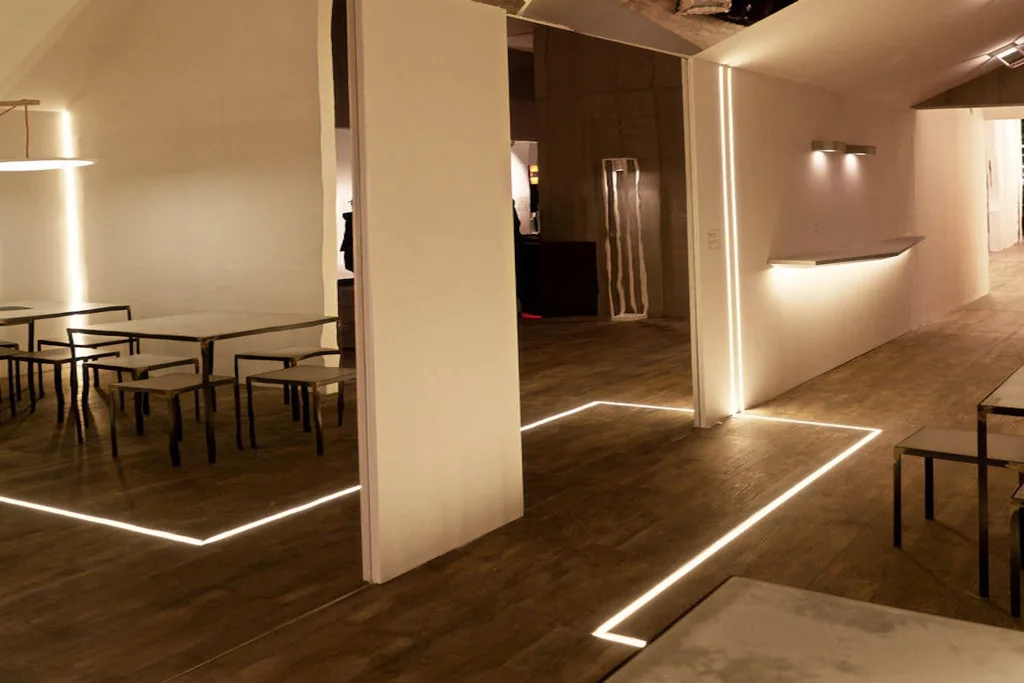
The best application for rope lights is definitely decorative lighting. They look great for Christmas, Halloween, or other holiday lighting purposes. You can also use them to highlight architectural features and artwork. Again, if you want to light up your pathways, sidewalks, roofs, or porches, try using rope lights.
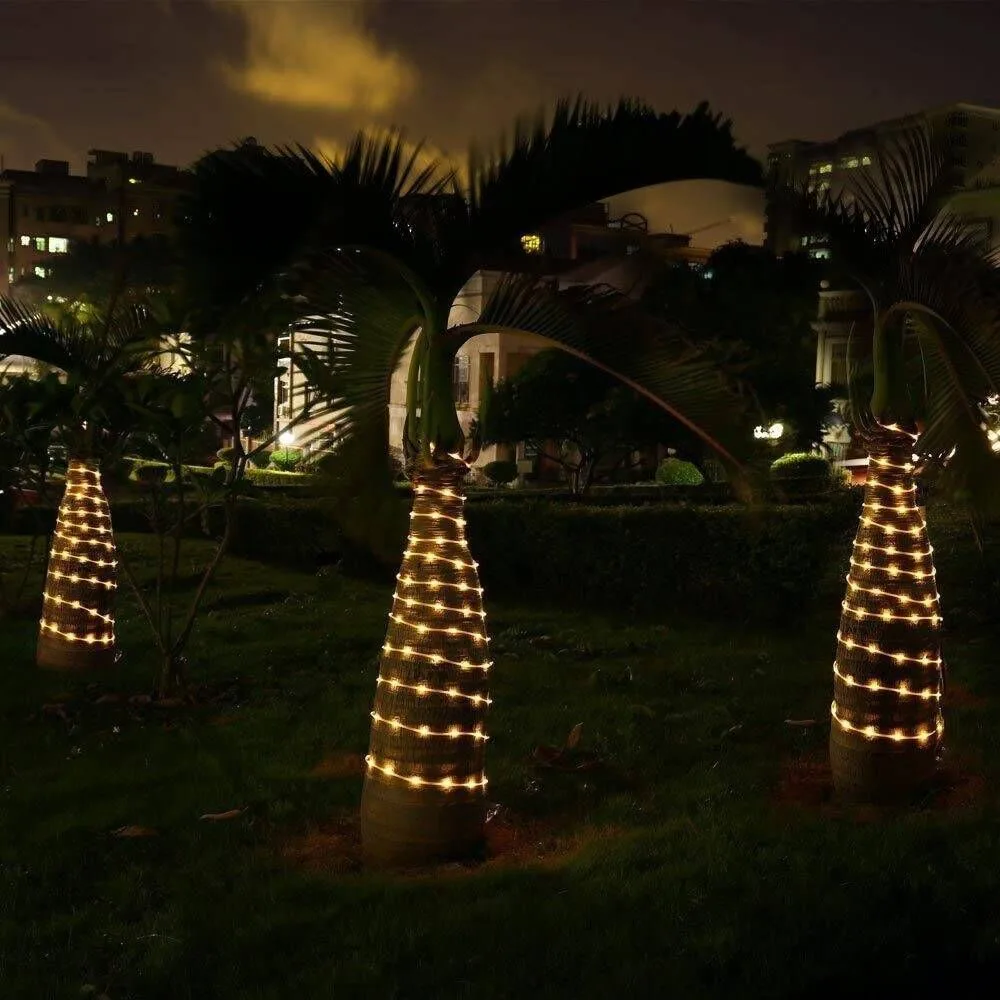
Cost Effectiveness
Although LED strip lights are expensive compared to rope lights, they can be profitable for you in the long run. When purchasing and installing LED strip lights, you may have to incur a higher initial cost. But trust me, when you replace these fixtures with traditional lighting solutions, you’ll be amazed at your electric bill! Plus, they require no maintenance costs. So, with all these factors in mind, LED strip lights are a cost-effective solution.
Rope lights are a bit cheaper than LED strips. Therefore, you need to invest less in initial costs. However, using incandescent rope lights can be a big hassle if you consider the cost in the long run. They consume more power and have a shorter lifespan. So, eventually, they will consume more power and increase your bills.
In addition, you will need to replace them frequently. Therefore, the lower initial investment is not a positive for incandescent rope lights, as it gradually requires more investment in maintenance. However, you don’t have to go through these problems if you use LED rope lights.
Rope Lights vs. LED Strips: Which is Better?
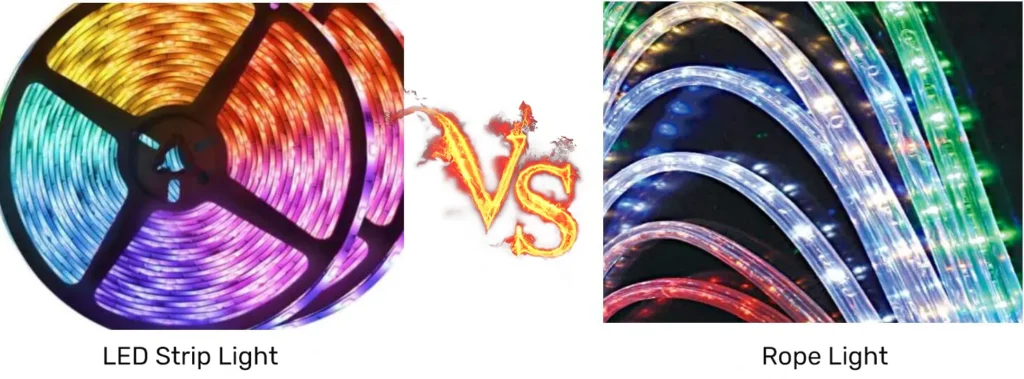
You must consider your application to decide which is better, LED Strips or Rope Lights. LED Strips are the best choice for general, task, and bright accent lighting. However, if you need soft accent lighting, you can also choose rope lights.
Another factor to consider when choosing between rope lights and strip lights is the installation area. Keep in mind that rope lights are not suitable for corners and edges that require a 90-degree bend. Therefore, LED strips are recommended for this type of lighting requirement. Again, if you are looking for advanced light color-changing options, LED strips are the ultimate solution. Rope lights cannot beat the RGB, programmable, adjustable white color variants of LED strips.
With all of these factors in mind, LED strips are definitely the better option. However, if you do have a quicker, cheaper solution, you can opt for rope lights. But I warn you against choosing incandescent lights. Instead, to save energy, buy LED rope lights.
Conclusion
LED strip and rope lights are both cut-and-bendable lighting solutions, but there are some distinct differences. The main differences are their shape, beam angle, and mounting. However, don’t forget to consider their application when picking out a strip light for your project. Rope lights are suitable for decorative lighting, while LED strips are versatile. Additionally, LED strips offer better flexibility and customization options.
When considering the cost and quality of your lighting project, it’s worth investing in high-quality LED strips over less expensive rope lights if you plan to use them regularly and for a long period of time for clear, professional, and attractive results.
Have you already decided to buy LED strip lights? Absolutely. Check out our range of quality LED strips for extended customization. We offer ODM and OEM services for voltage, cut length, IP rating, and other customization options. So whether you have an indoor or outdoor application, our LED strips will stand out.
